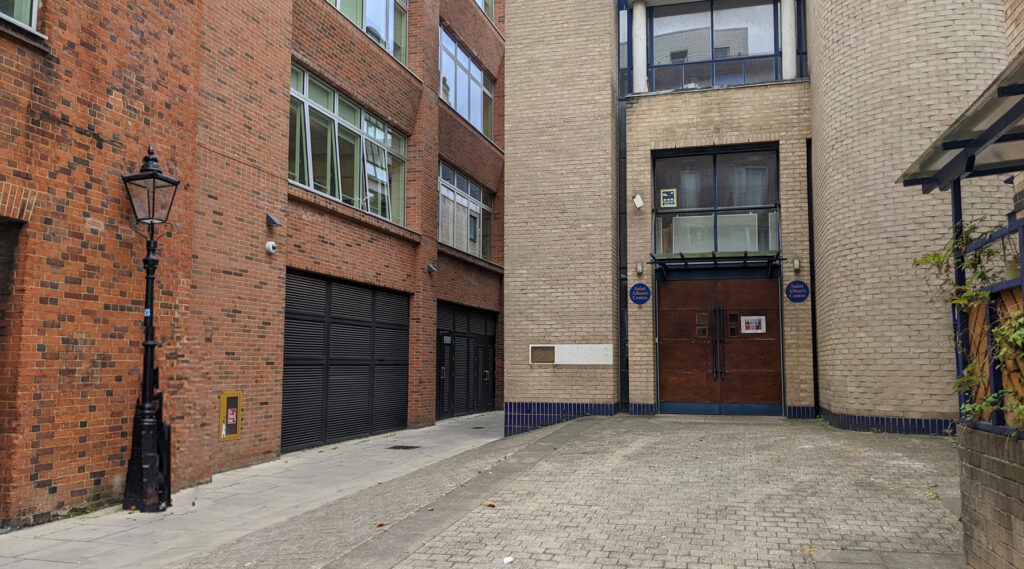This is a modest alley that can be found in the back streets of Holborn, and is notable apart from the varied history for having one of the few remaining painted road signs in the City.
When all around here was still fields, it was part of the Manor of Portpoole, owned by the Dean and Chapter of St Paul’s Cathedral, who rented it to Reginald de Grey, 1st Baron Grey of Wilton. The manor house of Portpoole subsequently became known as Gray’s Inn.
By the 1650s, the area was heavily developed, but still with a number of large gardens, and Leigh Place appears, roughly, to have sat within the land occupied by a large house and rear back garden fronting onto Baldwins Garden.
Although the area had lots of gardens, the street name actually comes from Baldwin, gardener to Queen Elizabeth I, not the local gardens. Although the gardens were long gone by the 1740s, that is also roughly when it seems that Baldwins Garden became Baldwin’s Gardens. Quite why it became a plural is unknown though.
It was around the mid to late 1700s that the area was redeveloped into lots of smaller houses, and the alley first appears in the Horwood map of 1799 as Hole in the Wall Passage.
It seemed to be renamed as Leigh Place around the late 19th century, probably after the Barons Leigh, who bought land in the area from the Baldwin family in 1689.
Richard Baldwin was a book and newspaper publisher who was often accused of printing seditious pamphlets in support of Wigg politicians without permission from the Stationers Company which at the time was required to uphold government censorship on books. At one point he even ended up in Newgate Prison charged with High Treason but managed to be released. His wife was later the publisher of The Tatler, a thrice-weekly journal that only lasted a couple of years, but seeded the later creation of The Spectator magazine.
Today, the alley passes through a block of flats known as Langdale House, a social housing estate owned by Origin Housing Association. This social housing group was formed out of the merger of several smaller organisations — the St.Pancras Housing Association, formed in the 1920’s to clear ramshackle housing and build homes for local people; the Humanist Housing Association, formed in the 1930’s to provide housing for people who could not gain access to charitable housing traditionally provided by the churches because they did not follow the religion; and Griffin Homes, formed in 1974 to provide homes for London Transport staff.
Behind this Edwardian block, are two very modern buildings, there used to be on the west side of the alley a pub and an old school. During WW2, most of the western side of the alley was flattened by bombs, including The Hole In The Wall pub that had sat on the top corner for at least a couple of centuries.
The eastern side was dominated by a tinfoil factory owned by Elmsslie and Simpson, later the Brook Street Iron Works. The factory was bought by Prudential Assurance in 1922 as a document storage archive, and the current building on the site was constructed in around the same decade, known as Prop House.
In the 1960s, the document centre became a computer centre, but was sold to the local council in 1979, and then to the current owners, Workspace in 1999 as the Hatton Square Business Centre, now called The Record Hall.
It has recently been refurbished and expanded. The letters on the outside of the building with its new name may look familiar to some people, as they are directly inspired by the Air France logo that used to be on Piccadilly, and were installed by Karakusevic Carson Architects.
Around the north end is the back entrance to the St Albans Centre, a conference centre built in 1990 and attached to St Alban the Martyr Church. The small car park is where the old pub used to be. So no drinking, but plenty of driving.













Une blaste de la past. Merci Monsieur.